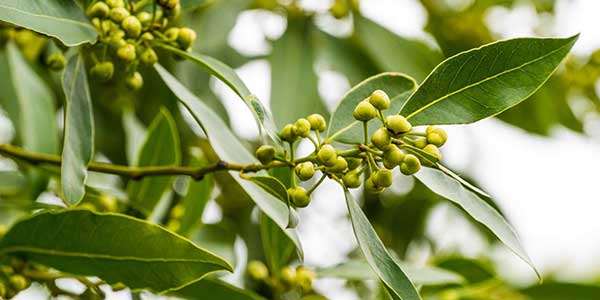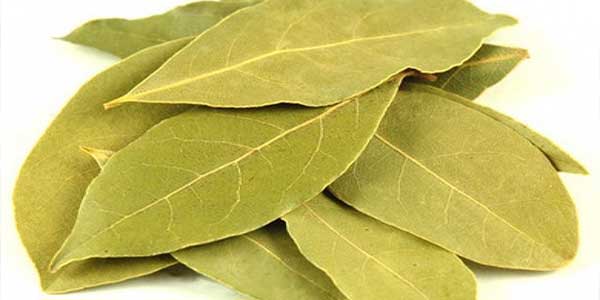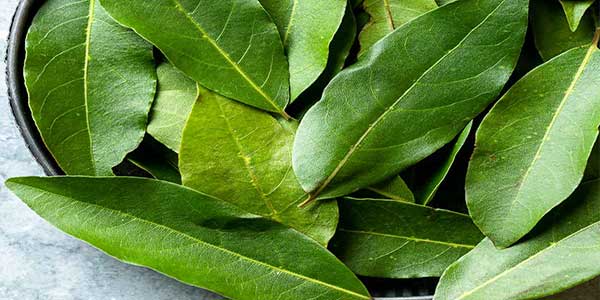Introduction
Bay leaf, also known as Tajpatta or Tej Patta, is a popular culinary herb known for its aromatic flavor and distinctive fragrance. It is widely used in various cuisines around the world, including Indian, Mediterranean, and Caribbean dishes. Beyond its culinary applications, bay leaf also offers several health benefits. In this comprehensive article, we will delve into the details of bay leaf as a cooking ingredient, exploring its uses, qualities, origin, sources, applications, health benefits, use in cooking, how to use it, and potential side effects.
Origin and Sources of Bay Leaf
Bay leaf is native to the Mediterranean region and is derived from the bay laurel tree, scientifically known as Laurus nobilis. The tree is characterized by glossy, dark green leaves that possess a strong, aromatic scent. Bay leaves are harvested from mature trees and are typically dried before being used in culinary preparations. They are readily available in most grocery stores, spice shops, and online retailers, making them easily accessible for home cooking.

Qualities of Bay Leaf
Bay leaves are known for their unique flavor and fragrance, which can be described as herbal, slightly floral, and reminiscent of thyme and oregano. These leaves contain essential oils, including eugenol, cineol, and myrcene, which contribute to their aromatic qualities. Bay leaves are typically used in dried form, as the drying process intensifies their flavor and aroma. They have a leathery texture and are dark green in color, with a slightly curved shape.
Uses and Applications of Bay Leaf (Tej Patta)
Bay leaf is a versatile herb that adds depth and complexity to a wide range of dishes. Here are some common uses and applications of bay leaf in cooking:
Soups and Stews: Bay leaf is frequently added to soups, stews, and stocks to enhance their flavor. It infuses a subtle herbal note into the broth and complements the other ingredients, creating a rich and aromatic base.
Braises and Slow-Cooked Dishes: Bay leaf is often included in braised dishes and slow-cooked recipes, such as pot roasts, curries, and casseroles. The long cooking time allows the flavors of the bay leaf to meld with the other ingredients, resulting in a more complex and savory dish.
Rice and Grain Dishes: Bay leaf is commonly used to flavor rice and grain dishes. It can be added to pilafs, biryanis, risottos, and lentil dishes during the cooking process to impart a fragrant aroma and subtle herbal flavor.
Sauces and Marinades: Bay leaf is a key ingredient in many sauces and marinades. It can be added to tomato-based sauces, gravies, and marinades for meats, adding depth and complexity to the flavors.
Pickling and Preserving: Bay leaf is sometimes used in pickling and preserving recipes. It adds a distinct flavor to pickled vegetables, brines, and vinegar-based sauces.

Health Benefits of Bay Leaf (Tejpatta)
In addition to its culinary uses, bay leaf offers several potential health benefits. Here are some of its notable health benefits:
Anti-inflammatory and Antioxidant Properties: Bay leaf contains various compounds, including flavonoids and polyphenols, that have anti-inflammatory and antioxidant effects. These properties may help reduce inflammation, protect against cellular damage, and support overall health.
Digestive Health: Bay leaf has traditionally been used to aid digestion and relieve digestive discomfort. It may help stimulate appetite, soothe indigestion, and alleviate symptoms such as bloating and gas.
Blood Sugar Control: Some studies suggest that bay leaf may help regulate blood sugar levels. It contains compounds that may improve insulin sensitivity and lower blood glucose levels, making it potentially beneficial for individuals with diabetes or prediabetes.
Respiratory Health: The essential oils present in bay leaf have expectorant properties, which may help relieve respiratory conditions such as coughs, colds, and congestion. Inhaling the steam from a bay leaf infusion or using bay leaf oil in a vaporizer can provide relief for respiratory symptoms.
Heart Health: Bay leaf contains compounds that may help support cardiovascular health. It may help lower cholesterol levels, reduce triglycerides, and improve overall heart function. However, more research is needed to fully understand its impact on heart health.
Use of Bay Leaf in Cooking
Bay leaf is typically used as a whole leaf in cooking and is removed before serving, as its texture can be tough and unpleasant to chew. Here are some tips on using bay leaf:
Whole Leaf: Add whole bay leaves to soups, stews, and sauces during the cooking process to allow their flavors to infuse into the dish. Remember to remove the bay leaves before serving.
Ground Bay Leaf: Ground bay leaf is also available and can be used in spice blends or as a seasoning for meat rubs. However, keep in mind that ground bay leaf is more potent, so use it sparingly to avoid overpowering the dish.
Infusions: Bay leaf can be used to make infusions by steeping the leaves in hot water. This infusion can be used as a base for soups, sauces, or even as a soothing tea.
Storage: Store bay leaves in an airtight container in a cool, dry place away from direct sunlight. Proper storage helps retain their flavor and quality for a longer period.

Side Effects and Precautions of Bay Leaf (Tej Patta)
Bay leaf is generally safe for consumption when used in culinary amounts. However, there are a few considerations to keep in mind:
Choking Hazard: Bay leaves are tough and can pose a choking hazard if consumed accidentally. Always remove bay leaves from dishes before serving.
Allergies: Some individuals may have allergies or sensitivities to bay leaf. If you experience any adverse reactions, such as itching, swelling, or difficulty breathing, discontinue use and seek medical attention.
Pregnancy and Breastfeeding: It is advisable for pregnant and breastfeeding women to consult with a healthcare professional before consuming bay leaf in large amounts or as a supplement.
Medication Interactions: Bay leaf may interact with certain medications, including blood-thinning drugs and diabetes medications. If you have any underlying medical conditions or are taking medications, it is recommended to consult with a healthcare professional before incorporating bay leaf into your diet.
Conclusion
Bay leaf, also known as Tajpatta or Tej Patta, is a versatile herb that adds aroma, flavor, and numerous health benefits to a variety of dishes. It is widely used in cuisines around the world and is highly regarded for its distinctive fragrance and herbal notes. Bay leaf enhances the flavors of soups, stews, rice dishes, sauces, and marinades, making it a valuable addition to the culinary repertoire.
Apart from its culinary uses, bay leaf offers potential health benefits, including anti-inflammatory properties, digestive support, blood sugar regulation, respiratory relief, and potential cardiovascular benefits. However, it is important to use bay leaf in moderation and be aware of any potential allergies or interactions with medications.
By incorporating bay leaf into your cooking and enjoying its aromatic qualities, you can elevate the flavors of your dishes while potentially reaping the health benefits it has to offer. Remember to experiment with bay leaf in different recipes and savor the delightful aroma it brings to your culinary creations.